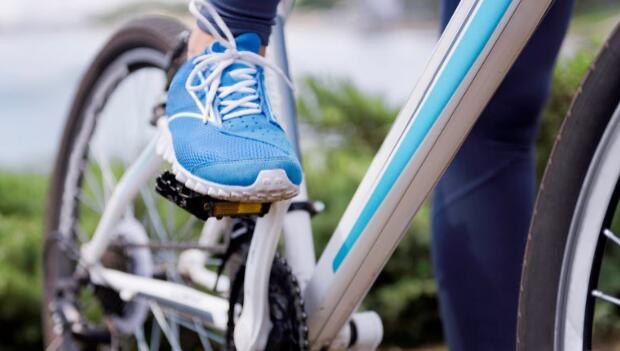
Pedaling a bike is more than clipping in and letting the circular mechanics of the chain ring and crank arm do the work for you. Riders need to direct the motion of their feet.
Triathlon Events Near You
In its simplest form, an optimal cycling pedal stroke works elliptically, with very light foot pressure around the circumference of the stroke. There are more forces during the forward and downward sections, but for the most part the best pedaling technique is 360 degrees of equal and "feathered" pressure.
More: 12 Weeks to Stronger Cycling
An efficient pedal stroke does not push down and then pull up, but rather has an oval-shaped (elliptical) motion with slightly more energy when the leg extends during the downstroke.
To illustrate how this feels, find a moderately inclined hill. As you begin the gentle ascent, note how the foot presses with more emphasis on the downstroke than during any other section of the pedal stroke. This is how the downstroke should be performed in nearly all terrain.
I developed—and have used—sector (phase) training for years in teaching the importance of the downstroke and improving the neuromuscular coordination of the other, less important phases of the pedaling stroke.
More: Sitting vs. Standing When Cycling Uphill
"Sectors" refer to the four phases of the cycling pedal stroke, and sector training concentrates on developing each phase separately. The overall goal is to develop a smooth, 360-degree stroke that feels the same pressure throughout—even though there are differences in power peak during each phase.
The backstroke, upstroke and overstroke are what I call transitional phases of the cycling pedal stroke. These phases do not play particularly important roles in total power output but lead into and out of the downstroke and keep the overall stroke very smooth. Still, practicing these less important sectors improves the movement and efficiency of the entire stroke.
The foot and pedal move circularly, but the force applied to the pedal varies around the 360 degrees of the pedaling revolution.
The position of the foot (toe up or down) varies as well according to the technique, flexibility in the lower leg and ankle, or preference of the rider. In general, during the 0 to 180 degrees (top dead center to bottom dead center) of the downstroke, the toe tends to point slightly upward, whereas in the 180- to 360-degree range, the toe generally points more downward.
More: 4 Drills to Improve Pedaling Technique
Usually, the backstroke, upstroke and overstroke are best trained independently in workouts. For example, a cyclist might do three sets of two minutes, concentrating on each secondary sector. During those two minutes, the other sections of the stroke are diminished.
Phases of the Cycling Pedal Stroke
Phase 1: Downstroke
The downstroke begins as the foot and pedal move from 0 to 180 degrees (12 o'clock to 6 o'clock), with the more propulsive section between 45 and 135 degrees (or generally the down-tube to about 5 o'clock). The motion of the foot should be directed forward and downward during the downstroke.
More: 5 Tweaks for Speed: Tips and Tricks to Boost Your Cycling Pace


